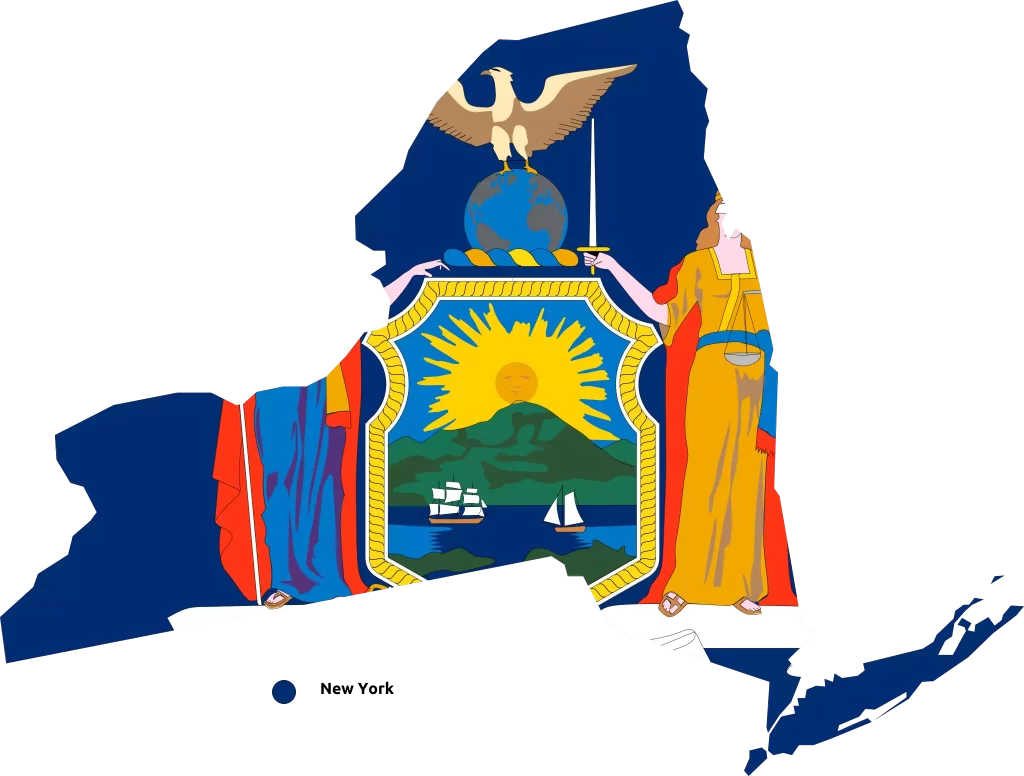New York

When it comes to law and order, the court system is the pillar that upholds justice in society. In the state of New York, the judiciary system is complex yet efficient, ensuring the execution of justice swiftly and fairly. Let’s navigate through the nuances of the New York judiciary system.
New York Judiciary System
New York Supreme Court
Contrary to what the name suggests, the Supreme Court in New York is not the highest court in the state. It is a trial court that hears cases involving significant disputes. It has broad jurisdiction and can hear any type of case except those within the exclusive jurisdiction of another court.
New York Court of Appeals
This is the highest court in New York. The Court of Appeals hears appeals from the Appellate Division of the Supreme Court and, in some instances, directly from the Supreme Court.
New York Civil Court
This court handles lawsuits involving claims for damages up to $25,000. It also includes a small claims part for informal dispositions of matters not exceeding $5,000 and a housing part for landlord-tenant matters.
New York Family Court
Family Court handles cases involving children and families, including child custody, visitation, child and spousal support, child abuse and neglect, and domestic violence.
New York Criminal Court
The Criminal Court handles misdemeanors and lesser offenses, and also conducts arraignments and preliminary hearings for felonies.
New York Surrogate’s Court
This court handles cases involving the affairs of decedents, including the probate of wills and the administration of estates.
New York District Courts
District Courts in New York handle a variety of civil and criminal cases.
Role of Judges
Qualifications
To become a judge in New York, one must have a robust legal background, usually as a practicing attorney. The specific requirements vary based on the court.
Appointment Process
The appointment process for judges in New York varies. Some judges are elected, while others are appointed by various methods.
Tenure
Once appointed, judges serve for varying terms, depending on the court to which they were appointed.
Roles & Responsibilities
Judges are responsible for ensuring fair trials, presiding over proceedings, and making rulings based on the law and the evidence presented. They play a crucial role in the administration of justice.
New York Court Proceedings
Stages of a Trial
Pre-Trial
The pre-trial stage involves the filing of the lawsuit, the response from the defendant, discovery, and pre-trial motions. This stage sets the groundwork for the trial.
Trial
The trial itself is where the case is presented before the judge or jury. Witnesses testify, evidence is presented, and the facts of the case are argued.
Post-Trial
The post-trial stage involves the delivery of the verdict and any potential appeals. This is where the legal dispute reaches its conclusion.
The Importance of Courts
Upholding Justice
Courts play a pivotal role in upholding justice. They provide a forum for resolving disputes and ensuring that everyone is treated fairly under the law.
Preserving Rights
Courts are key to preserving the rights of individuals. They interpret the law in a way that protects individual freedoms and safeguards against abuses of power.
Maintaining Law & Order
By enforcing the law and holding people accountable for their actions, courts maintain law and order in society. They deter crime and promote a sense of security among the public.
Challenges Facing the New York Judiciary System
Overcrowding
One of the significant challenges facing the New York judiciary system is overcrowding. The volume of cases often exceeds the system’s capacity, leading to delays and backlogs.
Limited Resources
Limited resources can strain the system. Budget constraints can affect everything from staffing to facility upkeep and technological upgrades.
Technological Integration
The integration of technology into the court system is a challenge. While technology can streamline processes and improve efficiency, it also requires training, infrastructure, and ongoing maintenance.
Conclusion
The New York judiciary system, like any other, is not without its challenges. However, it remains a robust pillar of justice in the state, committed to upholding the rule of law, preserving individual rights, and maintaining law and order. Through constant evolution and adaptation, it strives to overcome the obstacles it faces and serve the people of New York efficiently and effectively.
FAQs
- What is the highest court in New York? The highest court in New York is the Court of Appeals.
- What types of cases does the New York Family Court handle? New York Family Court handles cases involving children and families, such as child custody, visitation, child and spousal support, child abuse and neglect, and domestic violence.
- How does one become a judge in New York? The process varies depending on the court. Generally, one must have a strong legal background, often as a practicing attorney. Some judges are elected, while others are appointed.
- What are the stages of a trial in New York? The stages of a trial typically include the pre-trial stage (filing of the lawsuit, response, discovery, pre-trial motions), the trial stage (presentation of the case, testimonies, argument), and the post-trial stage (verdict, potential appeals).
- What challenges does the New York judiciary system face? Some of the major challenges include overcrowding, limited resources, and the integration of technology into the court system.
Counties is New York
Albany | Allegany | Bronx | Broome | Cattaraugus | Cayuga | Chautauqua | Chemung | Chenango | Clinton | Columbia | Cortland | Delaware | Dutchess | Erie | Essex | Franklin | Fulton | Genesee | Greene | Hamilton | Herkimer | Jefferson | Kings | Lewis | Livingston | Madison | Monroe | Montgomery | Nassau | New York | Niagara | Oneida | Onondaga | Ontario | Orleans | Oswego | Otsego | Putnam | Queens | Rensselaer | Richmond | Rockland | St. Lawrence | Saratoga | Schenectady | Schoharie | Schuyler | Seneca | Steuben | Suffolk | Sullivan | Tioga | Tompkins | Ulster | Warren | Washington | Wayne | Westchester | Wyoming | Yates
Federal courts:
Second Circuit Court of Appeals | U.S. District Court: Eastern District of New York, Western District of New York, Northern District of New York, Southern District of New York | U.S. Bankruptcy Court: Eastern District of New York, Western District of New York, Northern District of New York, Southern District of New York
State courts:
New York Court of Appeals | New York Supreme Court, Appellate Division | New York Supreme Court | New York County Courts | New York City Courts | New York Town and Village Courts | New York Family Courts | New York Surrogates’ Courts | New York City Civil Court | New York City Criminal Courts | New York Court of Claims | New York Problem Solving Courts
State resources:
Courts in New York | New York judicial elections | Judicial selection in New York
Counties in New York
in
Counties
Here are all of the Counties in New York
Albany
Allegany
Bronx
Broome
Cattaraugus
Cayuga
Chautauqua
Chemung
Chenango
Clinton
Columbia
Cortland
Delaware
Dutchess
Erie
Essex
Franklin
Fulton
Genesee
Greene
Hamilton
Herkimer
Jefferson
Kings
Lewis
Livingston
Madison
Monroe
Montgomery
Nassau
New York
Niagara
Oneida
Onondaga
Ontario
Orange
Orleans
Oswego
Otsego
Putnam
Queens
Rensselaer
Richmond
Rockland
Saratoga
Schenectady
Schoharie
Schuyler
Seneca
St. Lawrence
Steuben
Suffolk
Sullivan
Tioga
Tompkins
Ulster
Warren
Washington
Wayne
Westchester
Wyoming
Yates
District Courts
District Courts
Detail of every District Court is here.
See Other Courts in US
Alabama | Alaska | Arizona | Arkansas | California | Colorado | Connecticut | Delaware | Florida | Georgia | Hawaii | Idaho | Illinois | Indiana | Iowa | Kansas | Kentucky | Louisiana | Maine | Maryland | Massachusetts | Michigan | Minnesota | Mississippi | Missouri | Montana | Nebraska | Nevada | New Hampshire | New Jersey | New Mexico | New York | North Carolina | North Dakota | Ohio | Oklahoma | Oregon | Pennsylvania | Rhode Island | South Carolina | South Dakota | Tennessee | Texas | Utah | Vermont | Virginia | Washington | West Virginia | Wisconsin | Wyoming
